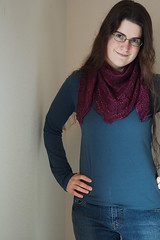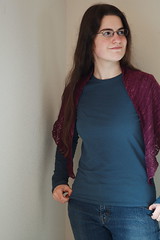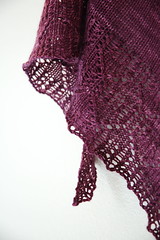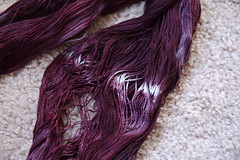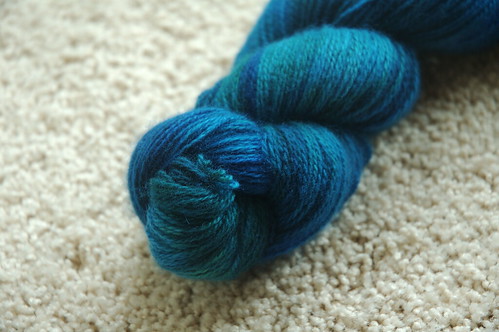
...and had an unpleasant allergic reaction halfway through. I really should have thought of it, because cashmere and mohair come from goats (even if they are different kinds of goats) and mohair is certainly out to get me. Apparently all goats have it in for me. A moment of silence please for all the lovely yarns that make me sneeze. and sneeze. and sneeze *sniff* Anyway, that put a halt to two potential shawl projects that I had in the works. While regrouping on the shawl front, I've been poking around on other projects...

This is the Spiral Rib Hat for my lovely sister-in-law. It's knit with Aurora 8, a super springy merino that I really love. The hat is actually done now, and it seems to have taken only 96 yds, rather than the 120 called for in the pattern. I think there is some sort of magic that happens when knitting with Aurora 8, it just goes and goes and goes.
I also swatched for these unbearably cute Ladybug Picnic Mittens (you really should click that link and check them out). I'm grateful to Cosy for her reminder of how to swatch in the round. My ladybugs will be cuter once I put their spots on.

And in the rehabilitation wing of my knitting sweatshop, some yarn that was once 1/3 of a sock is now free to become something else. Something more likely to be finished in my lifetime... I'd forgotten what a brilliant yarn this was after having it stuffed in a closet for a few years.
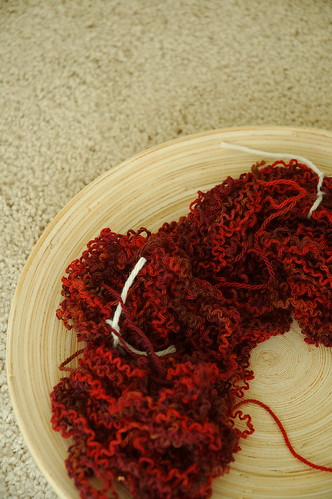
Maybe a shawl?

